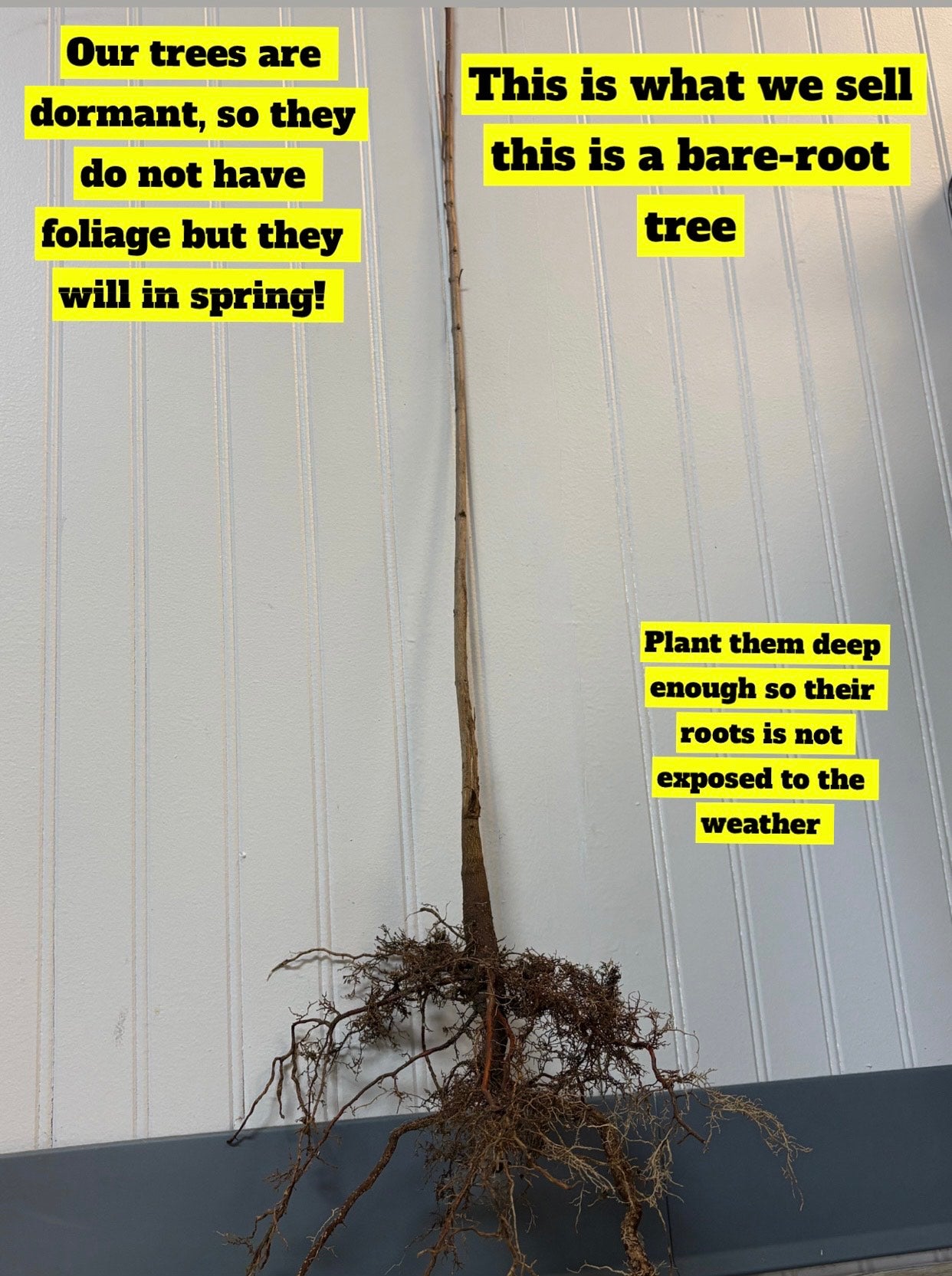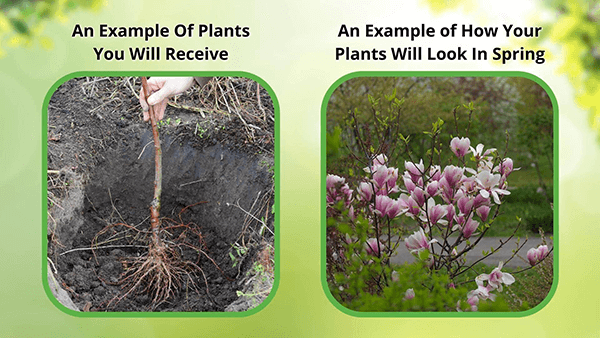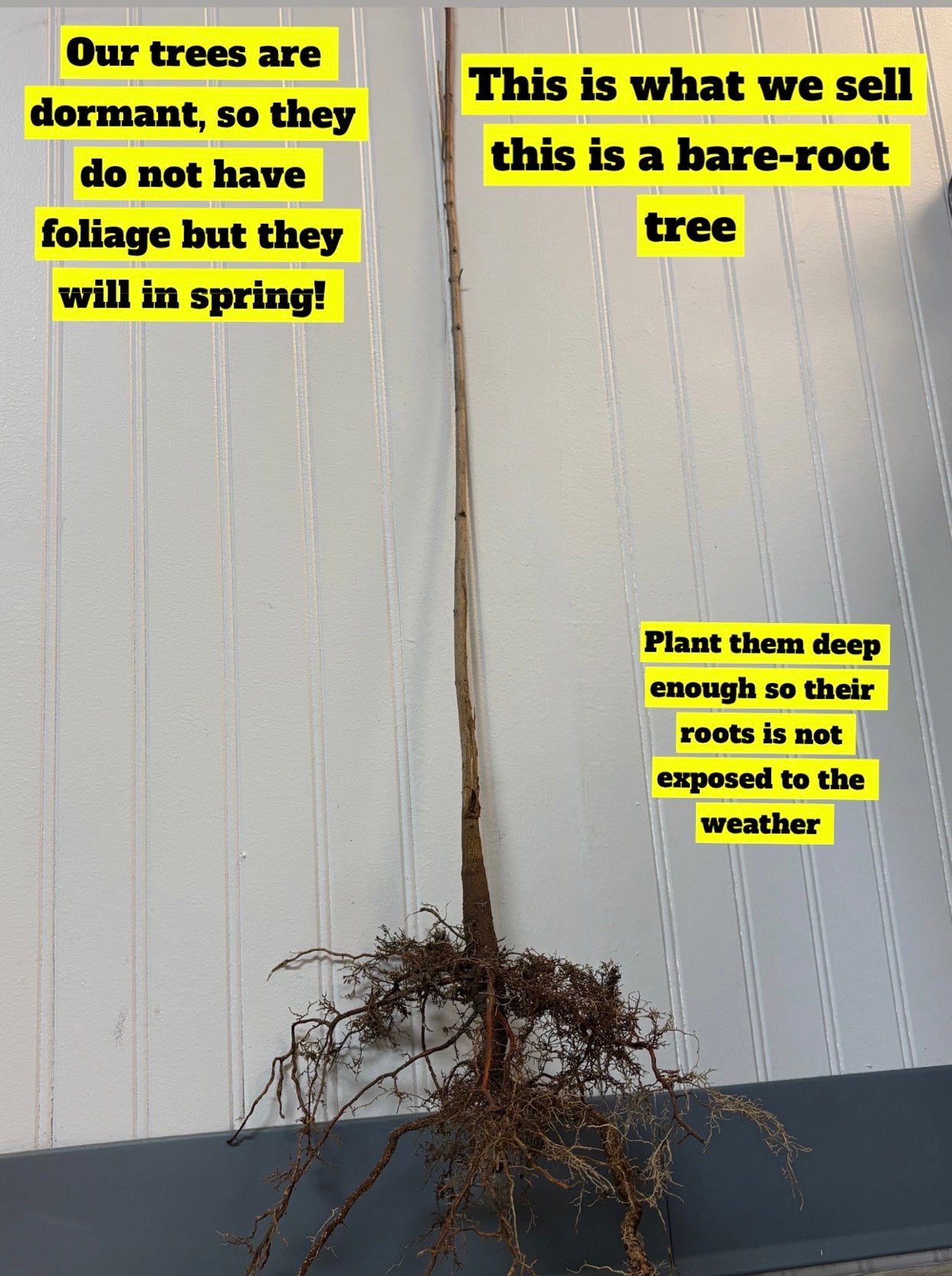



Removes & Absorbs Toxins
Improves Air Quality
Low maintenance & easy to grow
Buy American Elm Trees Online
American Elm trees is a large, tall, Flowering type native to North America. Its U.S.D.A. hardy zone designation is 2 – 9. Its habitat stretches from Florida to Newfoundland west to North Dakota and Texas.
American Elm Trees Love Wetlands But Is Drought Tolerant
It is primarily found in wetlands or other moist sites. It can grow to a height of 80 to 130 feet and a width of around 60 to 120 feet. The top portionhas a vase-shaped, symmetrical crown with spreading branches adorning it.
Buyers have the luxury of selecting from various available canopy sizes to suit their shading needs. The bark is dark grayish-brown and contains broad ridges with diamond-shaped fissures.
The Fall Tree Foliage
Each leaf on the tree has about 15 pairs of veins, with the two sides of the leaf's base being noticeably uneven. The leaf's surface is green and usually smooth, while the undersides are paler and downy. These leaves typically turn into a light yellowish color in the fall.
Although not noticeable to people, these tiny flowers attract bees, butterflies, and other pollinators. Seed pods form as light-green wafer-like pockets, turning into a pale tan color. They prefer the sun and are a long-lived, hardy type.
These Trees Adapts Quickly
These tolerate drought and urban conditions and do not require high maintenance. They adapt quickly to extremes in soil pH, including moisture, heat, and wind tolerance.
It is a tall type that yields flowers during the Spring and ample foliage in the Summer and Fall months. When they reach full maturity, their maximum height can be as tall as 130 feet, but more commonly seen are maximum heights ranging between 60 to 80 feet.
The American Elm Blooms Late Spring
American Elm is best grown in the U.S.DA. Growing 2-9 and reaches a maximum spread of up to 70 feet in peak growth conditions. Its first blooming period occurs between the mid-to-late Spring months of March and April.
This tree species' blooms are noted for their distinctive red-green tinge. It is well-tolerant to various environmental conditions and is well-known for its ability to stay healthy during droughts.
It grows best with direct exposure to sunlight, though it is well-adapted to partially shaded conditions. Furthermore, it is well-adapted to wet and dry growing conditions and frequently grows in urban environments.
The leaves are commonly elliptical and reach full maturity between April and May. This tree can be a shade, street, or lawn tree.
This Is How Your Plants Will Look upon Delivery
Shipping date depends on the date displayed and chosen when you order from the product's page.
We do not offer warranties on products after 5 days past receiving your plants.
Our Blogs
By signing up, you agree with our privacy policy.






